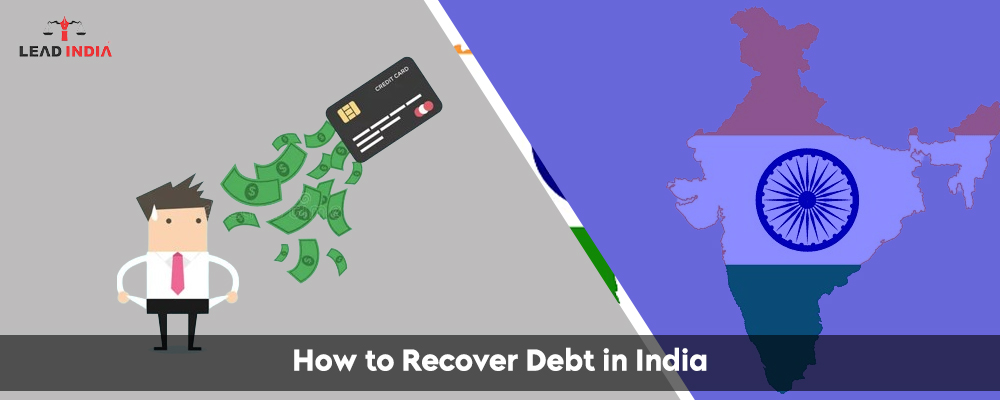Initially, India’s insolvency laws were restricted to the Presidency Towns Insolvency Acts of 1909 (applicable in Kolkata, Chennai, and Mumbai) and the Provincial Insolvency Act of 1920 (covering the rest of India). These Acts were largely concerned with individual insolvency and did not involve companies.
Recognizing the need for comprehensive insolvency and bankruptcy legislation, the legislature undertook many efforts to resolve debt collection difficulties.
Need A Legal Advice
The internet is not a lawyer and neither are you. Talk to a real lawyer about your legal issue

The Legal Framework for Debt Recovery in India
Legal debt collection is one of the cornerstones of the Indian legal system, as well as a key component of commercial contract enforcement. Under Indian law, debt recovery procedures vary based on the nature of the debt, the type of debtor, and any terms and conditions related to the original loan.
Other factors to consider include the type of debtor in question, whether the debt was accrued with malafide intentions, the debtors’ ability to repay the debt that has been accrued to them, and the category of the creditor who is instituting proceedings for the recovery of the debt.
- Recovery of Debts Due to Banks and Financial Institutions (RDBFI Act, 1993): This statute resulted in the establishment of the Debts Recovery Tribunals (DRT) and Debts Recovery Appellate Tribunals (DRAT) for the aim of recovering debts owed to banks and financial institutions.
- The Securitization and Reconstruction of Financial Assets and Enforcement of Security Interests (SARFAESI) Act of 2002: This Act seeks to establish a consolidated database of assets over which security interests have been created. The SARFAESI chose secured creditors to take custody of collateral properties, with the assistance of necessary authorities in the district where the collateral is located.
- Insolvency and Bankruptcy Code, 2016 (IBC): This law was enacted in an attempt to integrate the various rules governing debt recovery as well as the legally defined procedure for declaring insolvency by a debtor if the debtor is unable to pay the amounts owed. The IBC also divided creditors into two categories: financial creditors, whose relationship with the debtor is solely based on a financial contract, and operational creditors, whose relationship with the debtor stems from a transactional agreement based on the conduct of an operation.
- Enforcement of Security Interest and Recovery of Debts Laws and Miscellaneous Provisions (Amendment) Act of 2016 (ESIRDA Act): This legislation alters certain parts of the SARFAESI Act, the RDBFI Act, the Stamp Act, and the Depositories Act. Aside from restructuring the tribunal hierarchy, the bill increased the DRTs’ jurisdiction.
How to Recover Debt in India
Indian laws give you a variety of options to commence legal procedures to recover any debt owed. The most frequent methods are analyzed below:
- Initiation of proceedings under the Indian Penal Code: The aggrieved party may employ this procedure in certain specified scenarios by filing cases under the following clauses. Section 406: A criminal breach of trust, Section 417: Cheating, Section 420: Penalty for cheating and false persuasion to deliver property, Section 426 – Punishment for Mischief.
- Order 37 of the Civil Procedure Code, 1908 (CPC): It enables a creditor to launch a summary suit. A summary action, once launched, deems the plaintiff’s allegations to be genuine and determines the case in their favor, unless the defendant appears in court with a substantial case within 10 days of the suit’s creation. A summary suit may not be filed in circumstances where legal penalties may be imposed because the debt’s cause of action or amount is unknown.
- Bringing a civil action under Order IV of the CPC: These cases may be filed with the relevant court of jurisdiction under the Commercial Courts Act of 2015.
- Institution of proceedings under the Negotiable Instruments Act, 1881 (NI Act): This procedure is used for recovering money from payment instruments such as cheques and bills. Section 138 of the NI Act establishes the framework for beginning procedures in cases of bounced cheques, with specific dates and limitations for each step.
- Initiating arbitration procedures under the Arbitration and Conciliation Act of 1996 (A&C Act): This is the most prevalent technique of recovering accrued obligations resulting from a business transaction. Ideally, several elements, the major of which is the presence of an arbitration clause in the original agreement from which the dispute arose, determine the arbitrability of the dispute. The major issue regarding the arbitrability of disputes based on accrued debts is the legal feasibility of the notion of debt collection arbitration.
Lead India offers various legal services, such as free legal advice and internet information. We provide a facility in which you can talk to a lawyer and ask legal questions regarding the law here. Lead India’s lawyers can assist you with any legal issues. In India, Lead India provides free legal assistance online. In addition to receiving free legal advice online, Lead India allows users to pose inquiries to experts for free.





 Talk to a Lawyer
Talk to a Lawyer